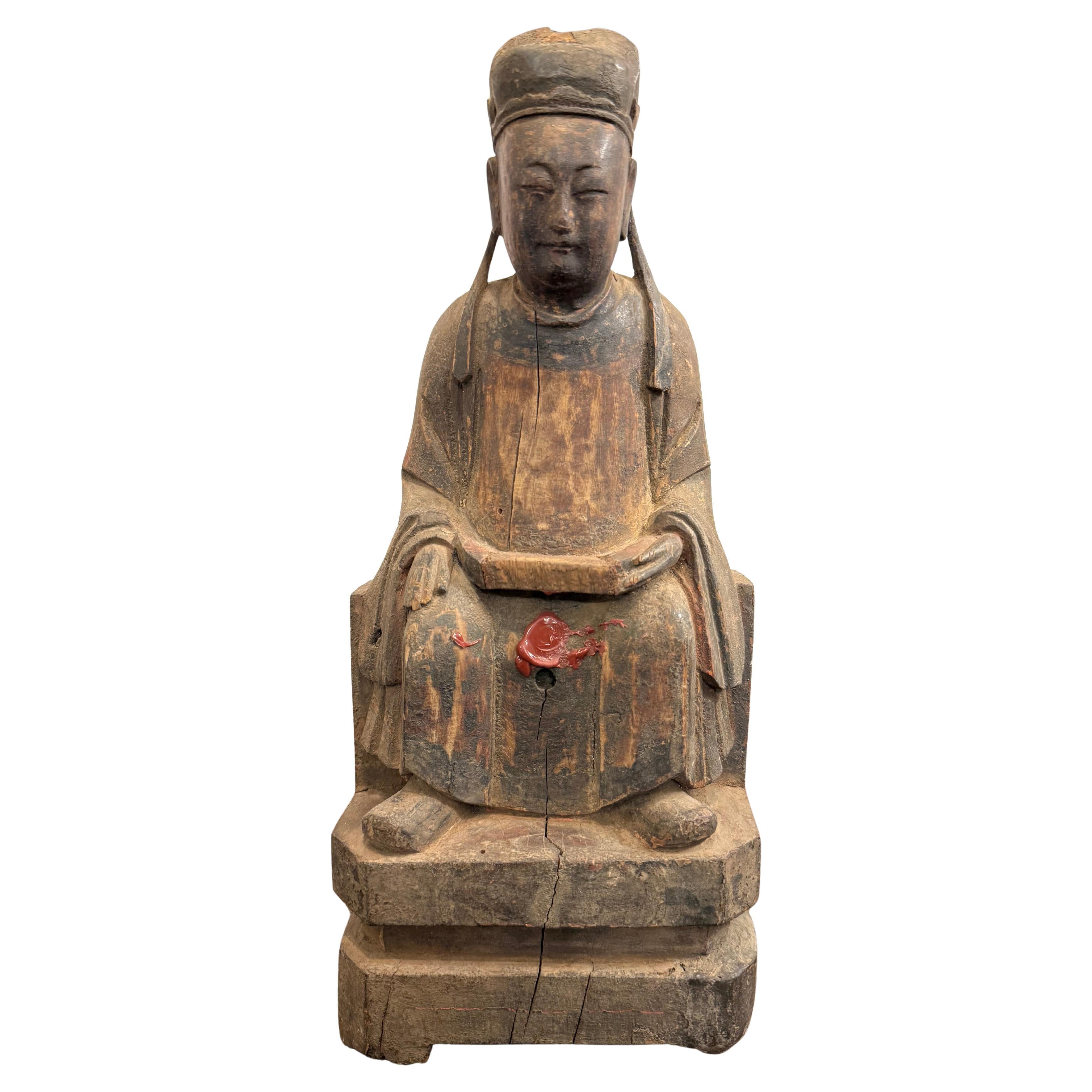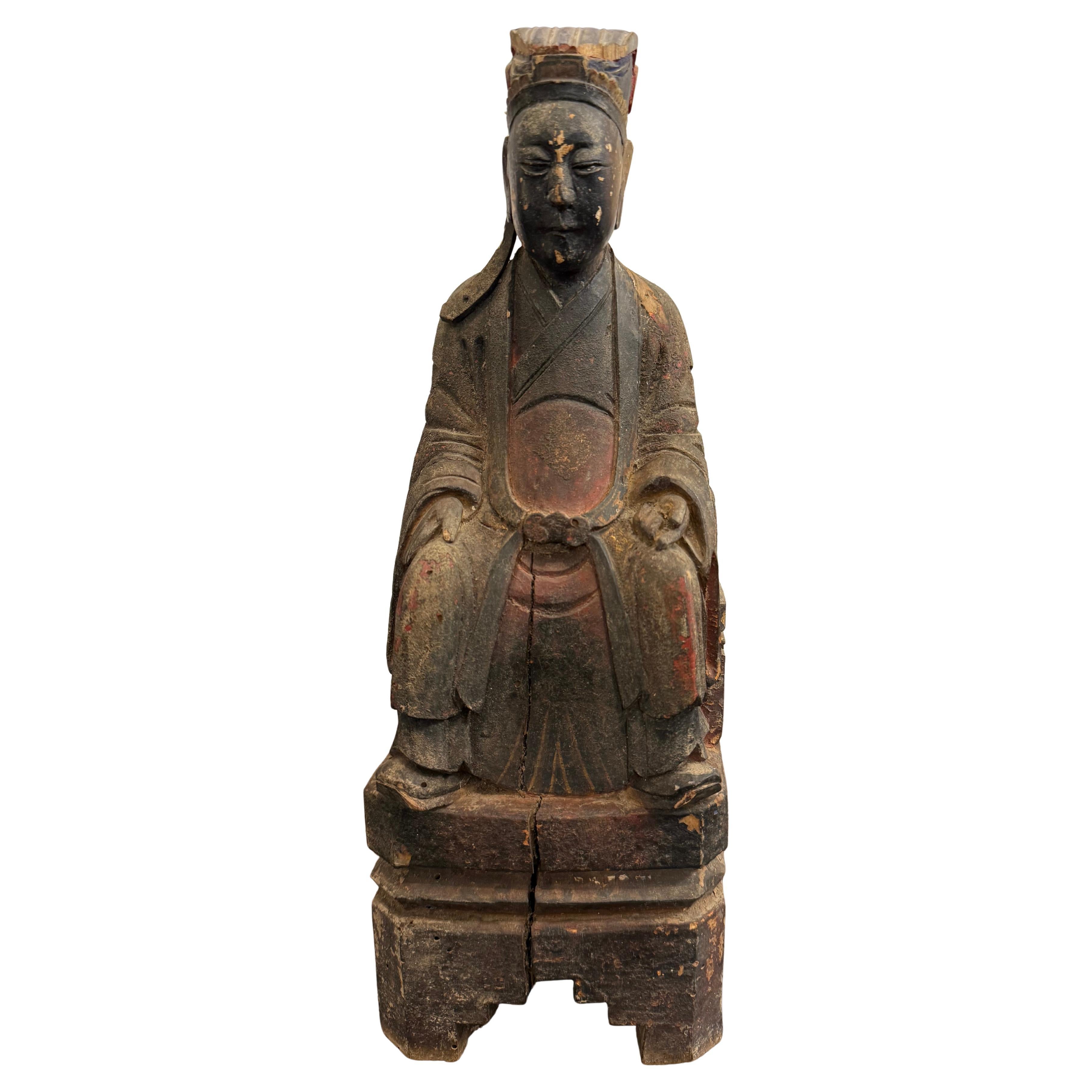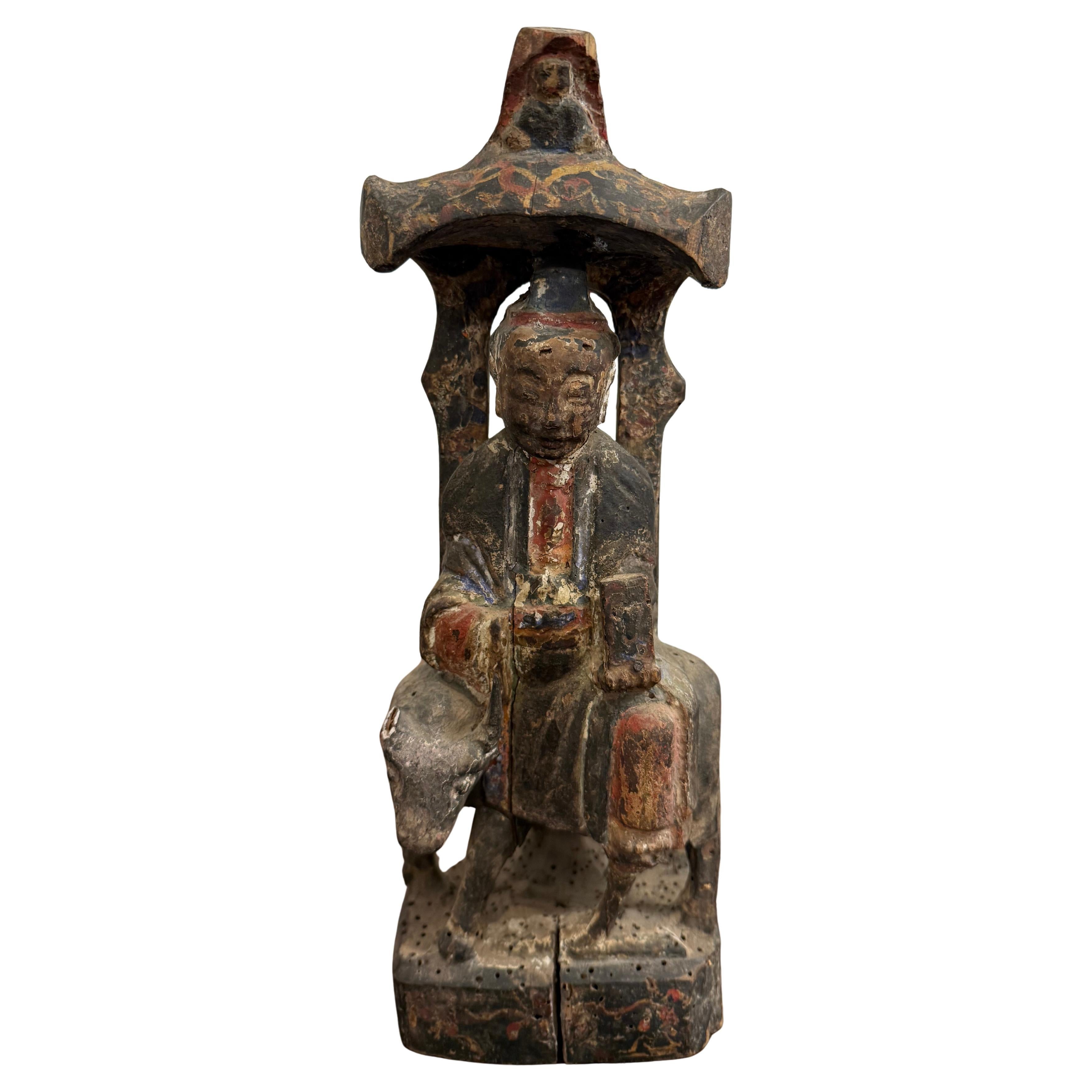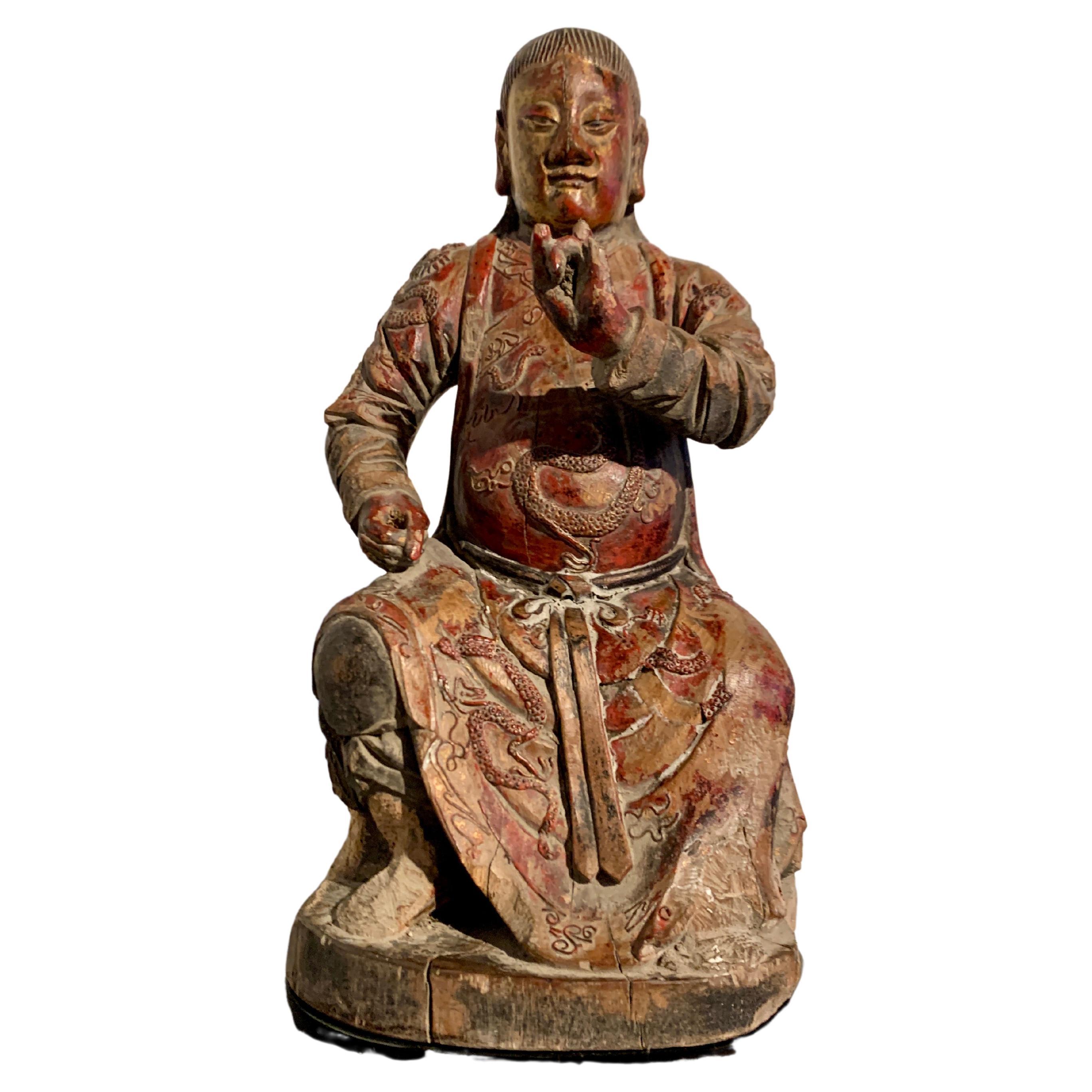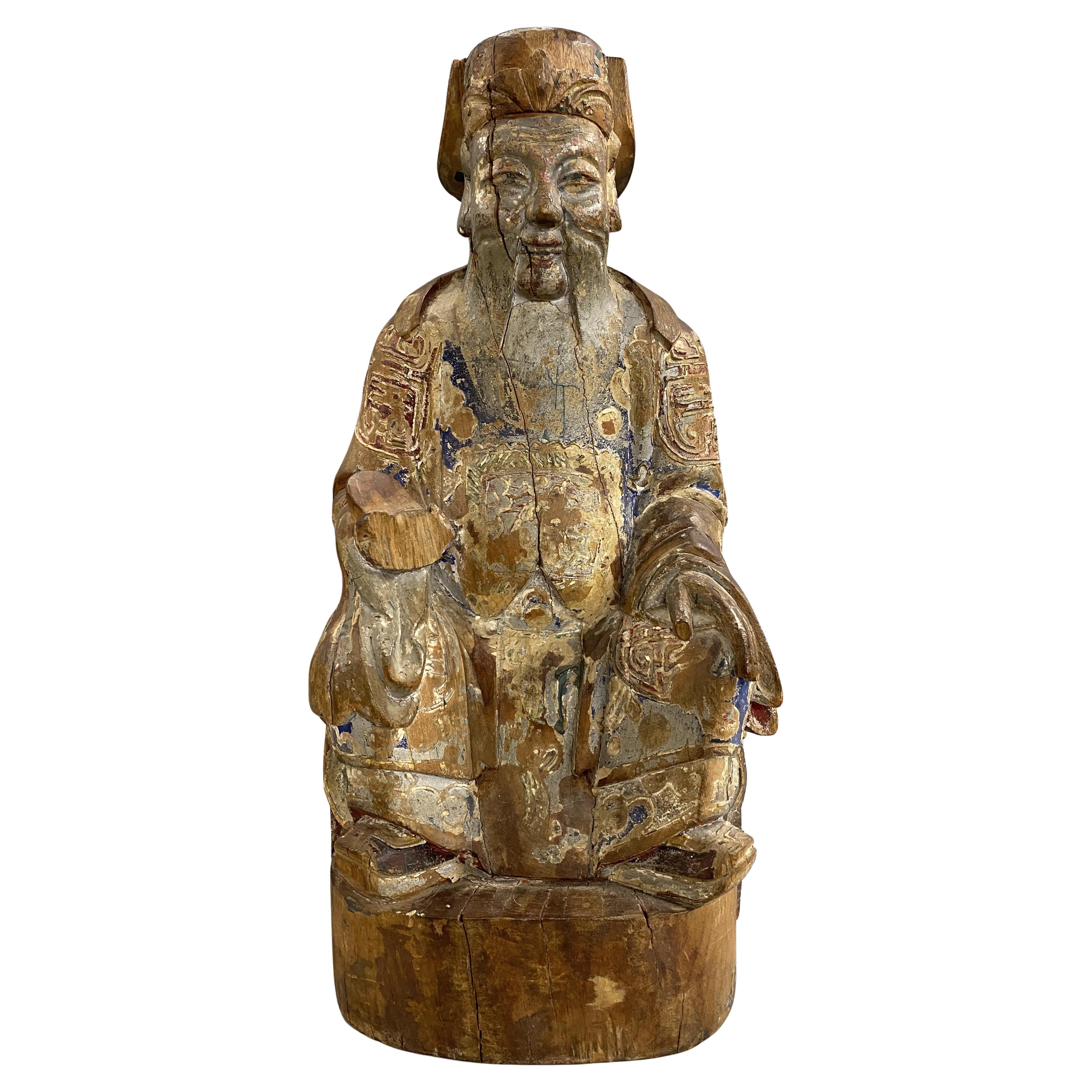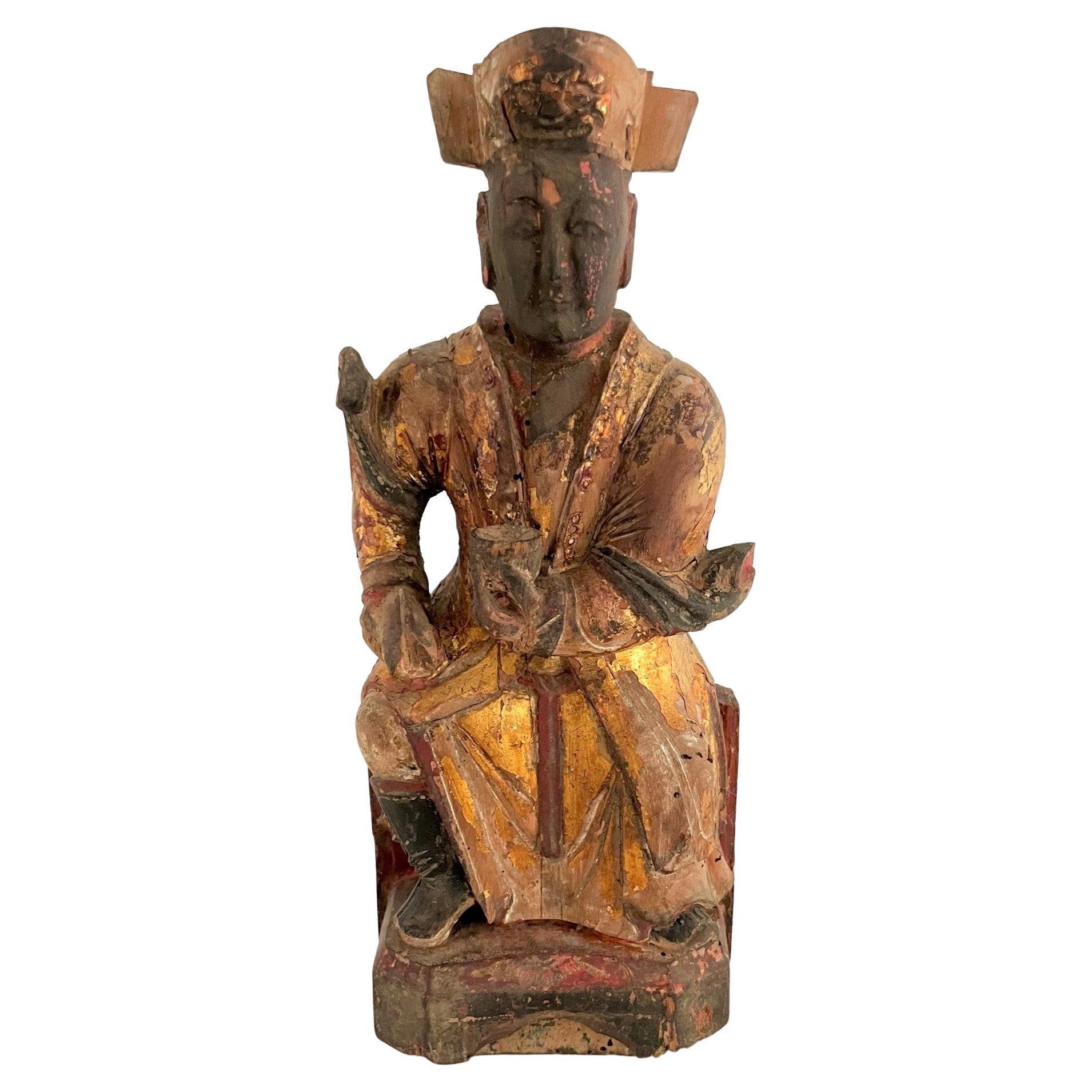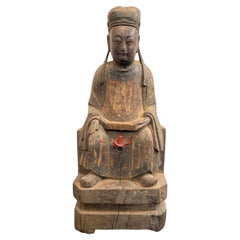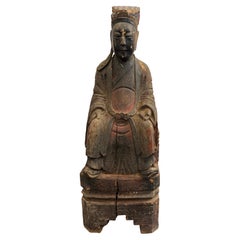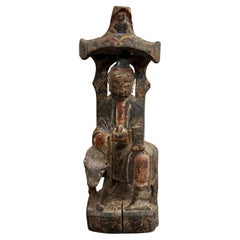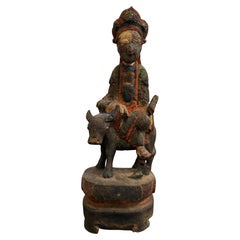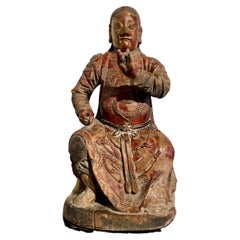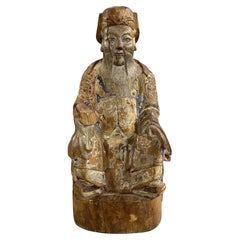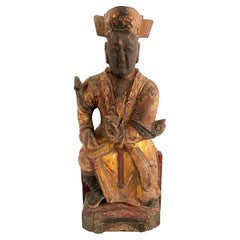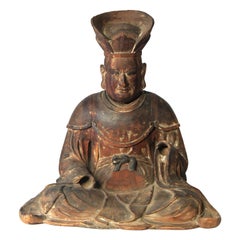Items Similar to A Small Chinese Carved Timber Gilt and Polychrome Figure, Ming Dynasty
Video Loading
Want more images or videos?
Request additional images or videos from the seller
1 of 12
A Small Chinese Carved Timber Gilt and Polychrome Figure, Ming Dynasty
$675
$1,35050% Off
£510.22
£1,020.4350% Off
€586.33
€1,172.6650% Off
CA$939.93
CA$1,879.8750% Off
A$1,045.64
A$2,091.2750% Off
CHF 548.14
CHF 1,096.2750% Off
MX$12,777.43
MX$25,554.8750% Off
NOK 6,979.83
NOK 13,959.6650% Off
SEK 6,570.54
SEK 13,141.0950% Off
DKK 4,376.73
DKK 8,753.4550% Off
Shipping
Retrieving quote...The 1stDibs Promise:
Authenticity Guarantee,
Money-Back Guarantee,
24-Hour Cancellation
About the Item
A Small Chinese Carved Timber Gilt and Polychrome Figure, Ming Dynasty
Provenance:
Private Old Australian Collection Acquired in Beijing Market in 1980s.
Description:
The cavity in the back identifying the figure as a devotional statue, depicting a man in the scholarly attire typical of Daoist figures, clothed in a guan hat with lobed fringing, with Daoists often decorating their headwear with adornments resembling clouds to symbolise the heavens, the guan with a pair of tassels or huì jiàn, representing the sword of wisdom, the figure’s daopao robes retaining some vermillion and cobalt pigment, with gilt remnants still visible within the draped folds, seated in a highbacked chair with both feet flatly on the ground, his left hand resting on his belly and his right placed upon his right knee, the whole raised on a carved integral base. Collectibles.
Dimensions:
Height: 33.5cm.
Width: 12cm.
Depth: 9cm.
- Dimensions:Height: 13.19 in (33.5 cm)Width: 4.73 in (12 cm)Depth: 3.55 in (9 cm)
- Style:Ming (Of the Period)
- Materials and Techniques:
- Place of Origin:
- Period:
- Date of Manufacture:1600s
- Condition:Wear consistent with age and use. Minor losses. Minor fading.
- Seller Location:ARMADALE, AU
- Reference Number:Seller: GS365 CP/MUBL1stDibs: LU8952244553142
About the Seller
5.0
Gold Seller
Premium sellers maintaining a 4.3+ rating and 24-hour response times
Established in 2012
1stDibs seller since 2023
12 sales on 1stDibs
Typical response time: 4 hours
Associations
International Confederation of Art and Antique Dealers' Associations
- ShippingRetrieving quote...Shipping from: ARMADALE, Australia
- Return Policy
Authenticity Guarantee
In the unlikely event there’s an issue with an item’s authenticity, contact us within 1 year for a full refund. DetailsMoney-Back Guarantee
If your item is not as described, is damaged in transit, or does not arrive, contact us within 7 days for a full refund. Details24-Hour Cancellation
You have a 24-hour grace period in which to reconsider your purchase, with no questions asked.Vetted Professional Sellers
Our world-class sellers must adhere to strict standards for service and quality, maintaining the integrity of our listings.Price-Match Guarantee
If you find that a seller listed the same item for a lower price elsewhere, we’ll match it.Trusted Global Delivery
Our best-in-class carrier network provides specialized shipping options worldwide, including custom delivery.More From This Seller
View AllA Small Chinese Carved Timber Gilt and Polychrome Figure, Ming Dynasty
Located in ARMADALE, VIC
A Small Chinese Carved Timber Gilt and Polychrome Figure, Ming Dynasty
Provenance: Private Old Australian Collection Acquired in Beijing Market in 1980s.
Description:
A devotional...
Category
Antique 17th Century Chinese Ming Sculptures and Carvings
Materials
Wood
$605 Sale Price
50% Off
Free Shipping
A Small Chinese Carved Timber Polychrome Figure, Ming Dynasty
Located in ARMADALE, VIC
A Small Chinese Carved Timber Polychrome Figure, Ming Dynasty
Provenance: Private Old Australian Collection Acquired in Beijing Market in 1980s.
Description:
The cavity in the back...
Category
Antique 17th Century Chinese Ming Sculptures and Carvings
Materials
Wood
A Small Chinese Carved Timber Polychrome Figure, Ming Dynasty
Located in ARMADALE, VIC
A Small Chinese Carved Timber Polychrome Figure, Ming Dynasty
Provenance:
Private Australian Collection Acquired in the Beijing Market in 1980s.
Description:
The cavity in the ba...
Category
Antique 17th Century Chinese Ming Sculptures and Carvings
Materials
Wood
A Small Chinese Carved Timber Gilt and Polychrome Figure, Ming Dynasty
Located in ARMADALE, VIC
A Small Chinese Carved Timber Gilt and Polychrome Figure, Ming Dynasty
Provenance: Private Old Australian Collection Acquired in Beijing Market in 1980s.
Description:
The cavity in...
Category
Antique 17th Century Chinese Ming Sculptures and Carvings
Materials
Wood
$560 Sale Price
60% Off
Free Shipping
An Important Chinese Carved Wood Figure of Guanyin, Ming Dynasty, 17th Century
Located in ARMADALE, VIC
An Important Chinese Carved Wood Figure of Guanyin, Ming Dynasty, 17th Century
Description:
A dignified portrayal of the bodhisattva, respl...
Category
Antique 17th Century Chinese Ming Sculptures and Carvings
Materials
Wood
A Large Chinese Carved Wood Figure of Guanyin, Late Qing Dynasty
Located in ARMADALE, VIC
Description:
A fine depiction of Guanyin, possessing the regal tranquillity that the Chinese Bodhisattva of compassion has come to be visually associated with. Marked by an urna signifying her spiritual enlightenment and crowned with a diadem depicting the Buddha Amitabha, the figure is immediately recognisable as Guanyin. Her androgynous figure is gracefully poised in the Lalit asana or “royal ease”, the pose classical in representations of the deity. The figure is asymmetric, with the weight of her supple form falling upon her left hand placed against the base, her right knee raised and left pendant. Her right hand rests upon her raised knee, delicately pinching at her draped attire. At first unassuming, this gesture may be suggestive of the Apana Mudra, the seal of purification. This Mudra is associated with physical wellbeing, fecundity and the cleansing of the body. Though she is adorned in the princely garb of dhoti, she bears features of idealised feminine beauty as prescribed in Asian art. With plump cheeks and near pouted lips, her full face gazes down upon the viewer with an empathetic and half-lidded gaze, upholding her title as ‘One who hears the cries of the world.’
Notes on the item:
Guanyin is the Chinese interpretation of Avalokiteshvara, the Indian Bodhisattva of compassion. The term “Bodhisattva” is derived from the Sanskrit “Bodhi”, meaning ‘awakening’ or ‘enlightenment’, combined with “Sattva”, meaning ‘spirit’ or ‘being’, referring to one on the path to achieving enlightenment. Bodhisattvas in Mayahana Buddhism are recognised as figures who have effectively achieved enlightenment yet relinquish their accension to nirvana in order to remain amongst mankind in the ultimate act of compassion to aid as spiritual guides. As such, the Bodhisattva inhabit a liminal space between samsara and nirvana; enlightened beings that maintain a relationship with humanity that buddhas cannot, as attaining Buddhahood necessitates the abandonment of all worldly attachments, including mankind. Guanyin’s very name, ‘One who hears the cries of the world’ highlights this role as a compassionate figure who acknowledges the suffering and strife of man. Along with Mahāsthāmaprāpta, a fellow bodhisattva, Guanyin serves as an attendant to Buddha Amitabha, with these three deities recognised as the Three Sages of Western Pure Land Buddhism, a sect of Mayahana Buddhism popular in East Asia.
Avalokiteshvara is commonly posited to have been adopted from Indian Buddhism into China as Guanyin around 200-400 CE, however it was the Tang dynasty (618-907) which saw the popularisation of the deity. By the Ming (1358–1644) and Qing (1644–1911) dynasties, Guanyin held the position as the most popular female deity in China. The unique state of religion in China held no monolithic canon regarding Buddhism and saw the assimilation of several belief systems, primarily Daoism, Buddhism and Confucianism. Consequently, Guanyin became a deity to be revered beyond Buddhism alone, appointed as both an official imperial deity and Daoist deity in the 12th century. Guanyin may also be seen to fulfil the role of idealised femininity as prescribed by Confucianism, with the scarcity of female Chinese deities perhaps accounting for the gradual gender shift Guanyin underwent.
The Indian Avalokiteshvara is unequivocally recognised as male, whilst the supposed gender of Guanyin remains contentious. Although there is a clear shift from the masculine Avalokiteshvara towards a more feminine representation, it is unclear if Guanyin is understood to be entirely feminine, to inhabit qualities of both genders or to be elevated beyond gender entirely, embodying neither. Depictions of Guanyin are highly androgynous, which some believe lends credence towards Guanyin symbolising the unity of dualistic forces as recognised in Daoism, displaying the anthropomorphism of yin and yang.
Comparative Analysis:
Market comparisons of similar Qing Dynasty polychrome figures of Guanyin include lot 767 (no.2) From Christies ‘Important Chinese Ceramics and Works of Art,’ New York, 25 March 2022, with the price realised USD 52,920 (Estimate USD 20,000 – USD 30,000). Christies also auctioned a comparable polychrome Guanyin...
Category
Antique Late 19th Century Chinese Qing Sculptures and Carvings
Materials
Hardwood
You May Also Like
Chinese Carved and Lacquered Figure of Zhenwu, Qing Dynasty, 19th century, China
Located in Austin, TX
A powerful Chinese figure of the Taoist diety Zhenwu (Xuanwu), carved and lacquered wood with applied lacquer details, Qing Dynasty, 19th century or earlier, China.
Zhenwu, also kno...
Category
Antique 19th Century Chinese Qing Sculptures and Carvings
Materials
Wood, Hardwood
19th Century Chinese Carved Polychrome Wooden Ancestral Figure Sculpture
Located in Milford, NH
A fine hand carved polychrome wooden seated Chinese ancestral figure sculpture, dating to the 19th century, with deep back cutouts, some paint losses, shrinkage cracks, edge losses, ...
Category
Antique 19th Century Chinese Sculptures and Carvings
Materials
Hardwood
19th Century Chinese Carved Wooden Altar God
Located in Atlanta, GA
This Chinese carved seated altar god was once used on the family altar to honor their ancestors. Ancestor worship plays a major role in Chinese religion. This beautifully carved figure is rich with character from a century of use with wonder signs of wear. The darken patina is created through years of burning of incense with the original gold gilt painting...
Category
Antique Early 19th Century Chinese Sculptures and Carvings
Materials
Wood, Paint
18th Century Chinese Wooden Figure 'Wanli'
Located in Esbeek, NL
18th century Chinese wooden figure, depicted Wanli.
See old sticker on the back of the figure, see picture.
Category
Antique 18th Century Chinese Sculptures and Carvings
Materials
Wood
18th Century Chinese Sculpture of a Dignitary in Carved and Lacquered Hardwood
Located in Brescia, IT
Big hardwood figure of a dignitary lacquered in original patina. Signs of age-related wear on the base, but all of excellent quality, China, 18th century.
Category
Antique 18th Century Chinese Qing Sculptures and Carvings
Materials
Hardwood
Early 20th Century Chinese Carved and Painted Wood Carved sitting Guan-Yin
Located in Pomona, CA
The image displays a statue of Guanyin, also known as Avalokiteshvara, a widely worshiped bodhisattva of compassion in Buddhism. It was made of camphor wood which has long history in...
Category
Early 20th Century Chinese Chinese Export Sculptures and Carvings
Materials
Wood
More Ways To Browse
Gilt Polychrome
Polychrome Carved Sculpture
Polychrome Figures
Wood Sword
Antique Folding Seat
Polychrome Wood Carving
Polychrome Statue
Carved Wood Tassels
Robe Man
Polychrome Chair
Antique Chinese Hats
Century Furniture Ming Chair
Century Ming Chairs
Chinese Seated Figure
Ming Chinese Figures
17th Century Wood Chairs
Ming Dynasty Sculpture
Carved Wood Asian Chairs
